The Rogue River is already an outstanding knife for bushcrafting and a variety of outdoor tasks. But this latest design makes it even better.
by Leon Pantenburg
DISCLAIMER: I did not get a free knife for this post. Nobody had any input into this review. The opinions expressed here are strictly mine, and all I ever promise in any review is a fair shake.
For me, and probably most hunters, any knife that goes along on a hunt must be first-and-foremost able to handle gutting, skinning and quartering a big game animal. But, since the best chances of getting into an emergency situation will probably happen while hunting, that same knife must also work for various bushcrafting/survival tasks.
The Rogue River came out several years ago. Named after the famed whitewater river in Oregon, the knife was designed to be a do-it-all utility knife. As such, it worked very well. It is lightweight, well-designed and capable of handing just about any knife task. I liked my original Rogue River so much, I gave it to a friend who does a lot of whitewater rafting.
This latest Rogue River version, available exclusively through Knivesshipfree.com, takes an already great knife and makes it even better.
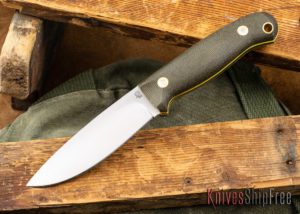
The L.T. Wright Rogue River is designed to be a do-it-all utility knife.
Here are the specs (Courtesy of Knivesshipfree.com)
| Overall Length: | 8 2⁄3“ |
| Blade Length: | 4″ |
| Blade Steel: | A2 Tool Steel |
| Blade Thickness: | .125″ |
My original Rogue River was used on an Oregon mule deer hunt. It worked well, but the design was not outstanding for a hunting knife. The saber grind with micro bevel didn’t bite like I thought it should. As a skinner, is was also OK. Not great, but OK.
At the time, I thought the Rogue River needed a few modifications to make it into a solid hunting knife. These included more belly on the blade, a convex grind and different steel. The KSF Rogue River addresses some of these aspects.
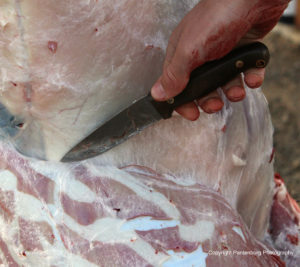
The original Rogue River is a good skinner, but the blade needed more belly and a different grind.
The good stuff
Steel: The KSF Rogue River comes in A2, with a convex grind, and CPM 3v in Scandi grind. I opted for A2. Many buyers these days seem to be overlooking A2 in favor of some of the super steels. While I love CPM 3v, CPM 4V, Elmax and variety of others, A2 makes a knife more affordable. Most users will never, ever need a better steel than A2.
I hang out in hot, humid swamps in Mississippi, and the conditions are perfect for rusting a blade. A2 will rust more readily than some of the super steels. But I’ve never had a problem with rust because I take care of my gear.
After a bloody gutting job, I wipe the blade and handle down with an alcohol swab, followed by a hand wipe. This will last until I can get back to camp and wash it correctly. This method has worked well, even for 1095 carbon steel.
Grind: The KSF Rogue River comes with a convex grind and micro bevel. Eventually, after considerable stropping, that blade will develop into a full height convex.
After years of field use, I have come to this conclusion: Convex is the best grind – for me – for everything. That includes bushcrafting, hunting, fishing, backpacking and general, overall use. Here is why. Rather than tapering with straight lines to the edge, the taper is curved. Such a shape keeps a lot of metal behind the edge, making for a stronger edge while still allowing a good degree of sharpness.
A Scandi, or Scandinavian grind, is a wide, flat bevel that runs to the edge of the blade, and there is little or no secondary bevel. The primary angle is engineered to match the quality of the steel and intended use.
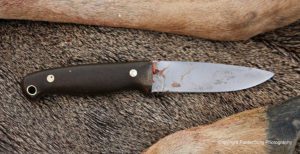
The original Rogue River worked well for skinning, but it would be better with a convex grind. The KSF A2 model comes with a convex grind with micro bevel.
IMO, Scandi is the easiest grind for newcomers to learn sharpening with. It’s simple – just put the bevel flat on the stone and with alternate strokes, work the bevel until the edge is sharp. It forms its own sharpening guide. Also, a Scandi grind is excellent for wood carving and various utility projects. It is superior for splitting wood, and does very well for cleaning fish. With the KSF Rogue River, you can have your choice.
Point: The drop point is an excellent choice for an overall use knife, and/or one that will be used for hunting. The point is centered in the blade, making it work better for drilling. The centered point keeps it from piercing the entrails when doing that initial spine down, edge up cut that opens up the abdominal cavity of a large game animal.
Blade design: The four-inch length is about right for a hunting/utility blade. There is more belly on the KSF blade, that curve near the point that does all the work. That makes the knife a better skinner.
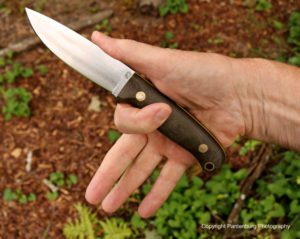
The handle works well in my large hands.
Sharpened spine: The spine is often overlooked, but it can save the sharpened edge. I use the spine for shredding tinder and, in a pinch, for scraping a ferro rod. The Rouge River spine has a 90-degree angle, like an ice skate, that makes these tasks easy.
Contoured grip handle: The handle is 4-3/8 inches long, and comes in a variety of handle materials. For my money though, you can’t beat a micarta handle for a user knife. My experience is that micarta gets tackier when wet, making it a more secure handle. This handle fits my large hands well.
Large lanyard tube: YAY! Finally a lanyard hole large enough to hold larger diameter cords! I use lanyards on all my knives that have the appropriate tubes. I generally use a length of fluorescent orange paracord. In deep snow, I’ll run my wrist through the loop to keep from losing the knife if it gets dropped. Here are other uses for a lanyard.
Quality sheath: L.T Wright knives come with quality leather sheaths of 7/8 ounce leather made by JRE Industries. The dangler sheath holds the knife securely in place, while allowing the user quick access. I have several JRE sheaths, and I like them very much.
Made in the USA: All L.T. Wright knives are made in Wintersville, Ohio by skilled American craftspeople. These folks pay local, state and federal taxes, and contribute to their communities. Buy American and buy local!
So is the KSF Rogue River the knife for you?
I loved the original Rogue River, and was hard pressed to find ways of improving it. But this latest KSF version hits every tweak I would have suggested. This latest incarnation makes the Rogue River a great bushcrafting knife AND an excellent knife for big game hunters.
Deer hunters: Take notice. This may be that knife you’ve been looking for. I’ll be checking that out this fall!
Please click here to check out and subscribe to the SurvivalCommonSense.com YouTube channel – thanks!

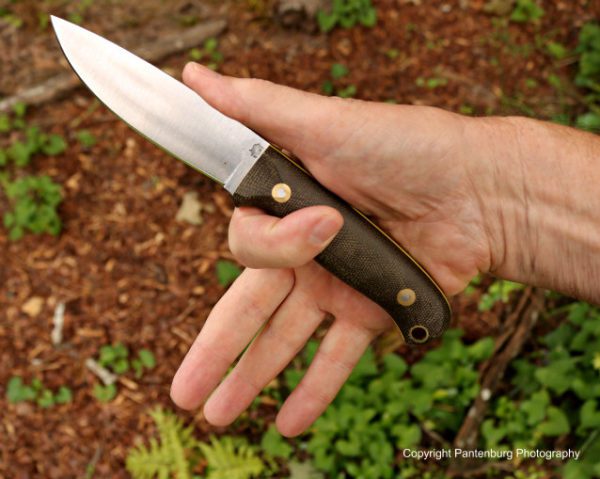

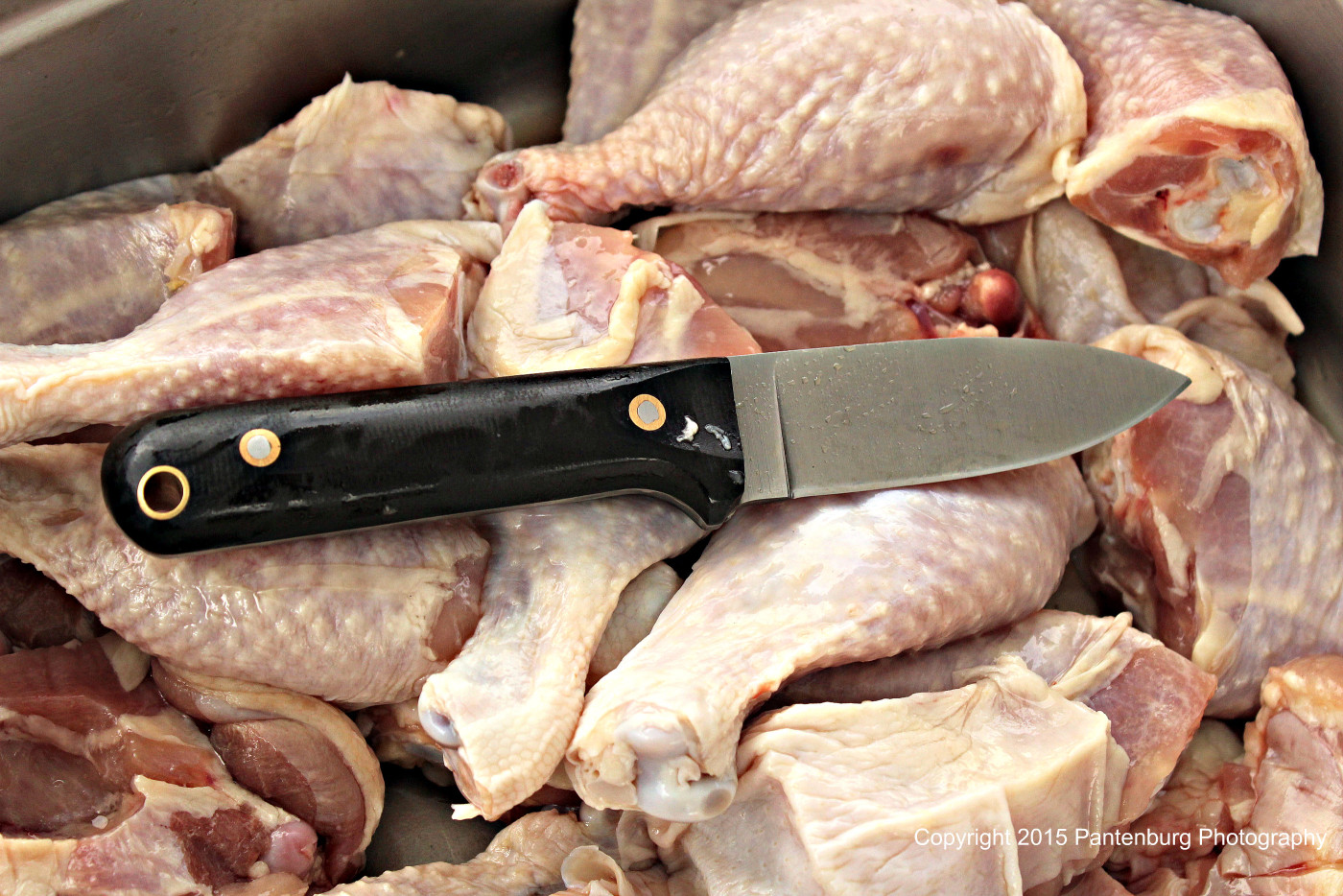
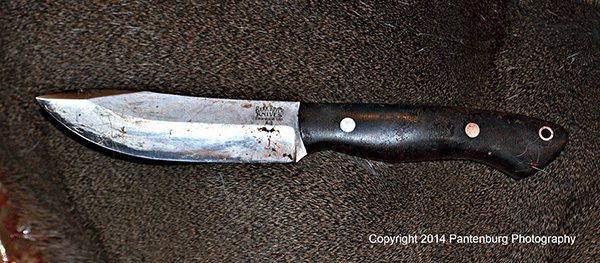
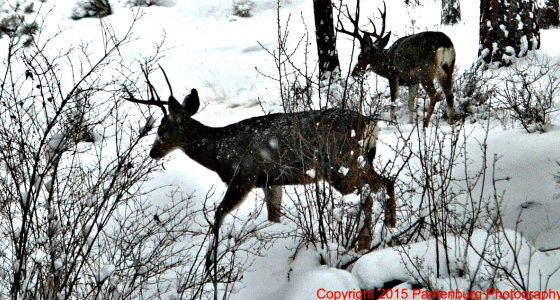
Leave a Reply